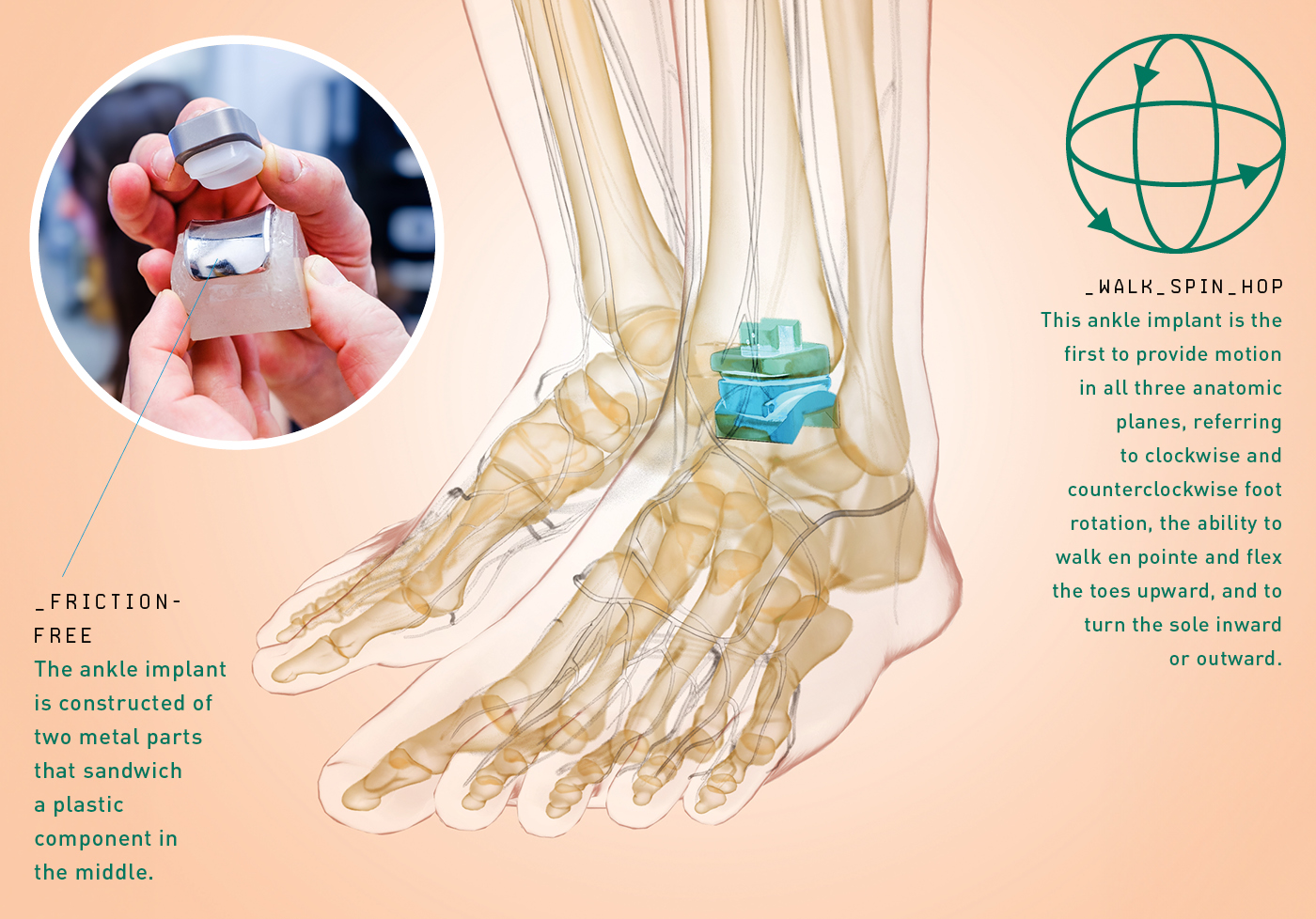
_Sorin Siegler
Siegler is a professor of mechanical engineering and mechanics in the College of Engineering.

_Brian Garvey
Garvey (BS/MS ’12) is senior vice president of restor3d.
An ankle implant inspired by the insights of Sorin Siegler, a mechanical engineering professor in Drexel’s College of Engineering, is continuing its forward march into new areas of personalized medicine. And so, nimbly now, are the patients who have received the pioneering implant.
The Kinos Axiom Total Ankle System received FDA approval in June 2020, clearing the way for orthopedic surgeons to implant the devices in patients with arthritic or injured ankles. As of July 2022, more than 200 patients had received the ankle implants, with many surgeons clamoring to provide them.
The implants reflect a discovery Siegler made in 2013 that upended the medical community’s understanding of ankle anatomy. Siegler used MRIs, CT scans and 3D renderings of the scans to demonstrate how the talus bone that forms the centerpiece of the ankle joint is shaped and oriented differently than what had been believed for many decades. In so doing, he helped revive interest in ankle replacement surgery, which had accrued a poor track record and fallen out of favor. For years, many patients with damaged ankles opted instead to undergo fusions, which robbed them of the flexibility to run, jump or dance.

Kinos Medical, the company established in 2017 to develop and commercialize implants based on Siegler’s discovery, launched the product in late 2020. Kinos then was acquired by and merged in May 2021 with restor3d [sic], a North Carolina-based developer of personalized orthopedics.
The merger is making it possible to revolutionize treatment for patients who need ankle replacements, says Brian Garvey, BS/MS ’12, a former student of Siegler’s and founder of Kinos who now serves as senior vice president of product development and a board member at restor3d.
“Our implant is the first to provide motion in all three anatomic planes,” Garvey says, referring to clockwise and counterclockwise foot rotation, the ability to walk en pointe and flex the toes upward and to turn the sole inward or outward.
The company’s expertise in 3D printing will allow for the design of implants customized to individual ankles, Garvey says, while its ongoing partnership with Drexel supports research to evaluate diverse aspects of biomechanics, which will strengthen the diagnosis and treatment of orthopedic patients. In addition, he adds, biomaterials restor3d is developing will allow implants to last longer, making them suitable for use in younger patients.
The ongoing research in Siegler’s lab has helped restor3d establish an advanced manufacturing model that the company aims to adapt to other joints.
“We hope to keep providing this new and advanced technology to the surgeons and the patients who need it the most,” Garvey says.
